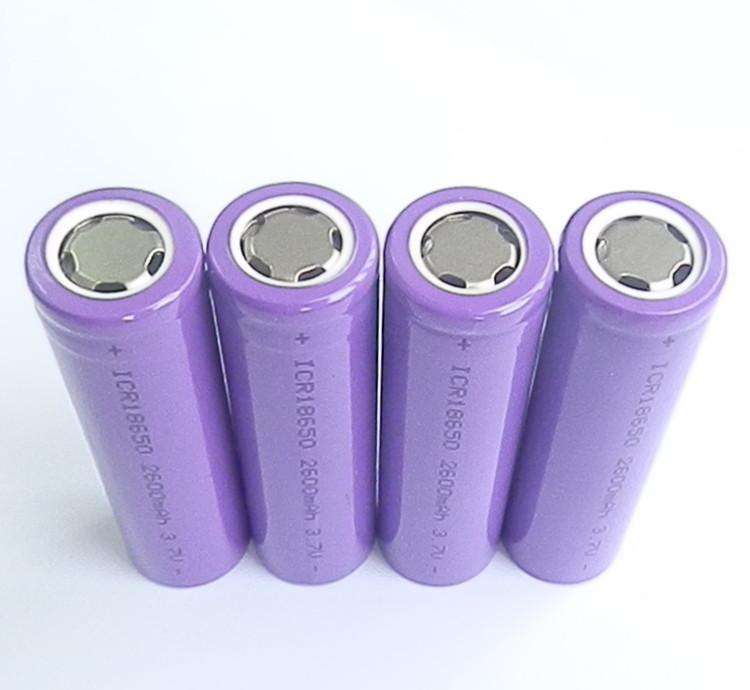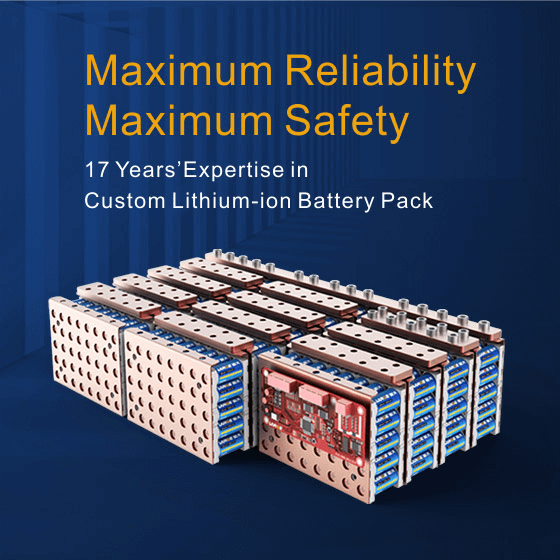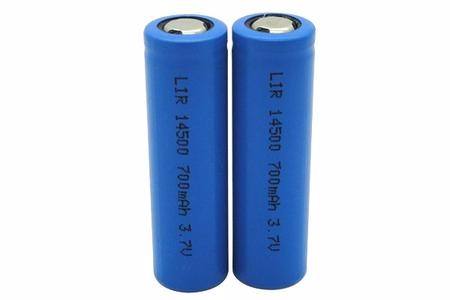How to check 18650 battery?
May 21, 2019 Pageview:1614
Intro
In the era of advancing science and technology, a vast application of electronic devices is seen in almost every household, majority of which are battery operated. In fact, some vehicles are also having 18650 batteries installed in them. With appliance usage in routine, people opt for rechargeable batteries; for convenience, the common ones are the 18650 batteries, in simple words, lithium ion batteries. Major use of these batteries is seen in flashlights, electronics, vaping and some electric vehicles, laptops and other electronic devices, smoking devices etc. Most 18650 batteries have a voltage of 3.7 V and amperage between 1800mAH and 3500 mAh. 18650 batteries come in either protected form or unprotected type; the protected ones having an electronic circuit, which is embedded in the cell packaging, to prevent the battery from overheating or over charging/discharging.

18650 battery specifications
· Rechargeable lithium ion battery
· Capacity is measured in milliamp hours
· Maximum continuous discharge is measured in Amperes
· Nominal voltage: 3.7 V average
· Maximum charge current around 2600 mA
· Maximum discharge current around 5200 mA (for continuous discharge)
· No such defects as deep scratch, crack, rust, discoloration or leakage, which may adversely affect the commercial value of the cell
· Overcharge detection voltage: 4.25 +/- 0.025V
· Over discharge detection delay time: 100 +/- 10mS
· Over current detection current: 100A +/- 20A
· Release condition: cut load, auto release
· High temperature protection with 75 degree Celsius
· Storage temperature: -40 – 85 degree Celsius
Lithium ion battery problems
Apart from the benefit of being able to recharge lithium ion batteries, some common problems are also associated with them.
· These batteries tend to overheat and explode if charged too fast. This effect might be linked with the lithium battery being expanded while charging
· They often come with a short life time; die after less than 1000 charge/discharge cycles
· The lithium batteries use flammable chemicals, causing cars to explode upon hitting in certain ways
· The chemicals contained are toxic, hence, special care is required while discharging
· These batteries underperform in extreme temperatures, for example, when temperatures are lower than 0 degree Celsius or higher than 50 degree Celsius. This limits their applications.
· Since the chemicals are in liquid state, hence, these batteries require rigid and expensive casing, to prevent leakage
· They are expensive to transport, as extra precautions are required to avoid explosions and additional approval is needed to ship these batteries.
· Voltage below 2V will cause the internal structure of the lithium battery to be destroyed, affecting the battery life
· If the detection accuracy is not enough or the contact resistance cannot be eliminated, it will show that the internal resistance is too large
· Battery loss as a result of incorrect spot welding

Best 18650 battery suggestions
Before using lithium ion batteries, some basic rules should be kept in mind
· Not to charge these batteries past 4.2 Volts
· While discharging them, not to go below 3.0 Volts
· Charge current be limited to about 0.5 C
· Discharge current should also be limited as specified
· Charge and discharge temperature should also be limited
· Cell voltage be monitored for balance
· Capacity and charge cycle lifespan should be considered
· Physical protection of the pack should also be checked for
· Short circuit protection be also checked
· Individual cell disintegration issues should also be considered
How long does it take to charge an 18650 battery?
The normal charging time for an 18650 battery is approximately 4 hours. Charging time is a noticeable way to determine battery health; longer charging time than usual, is a sign to replace the battery. If a micro USB charger is used, then battery charge time is around 3 hours. As the battery gets older, charging time tends to get longer too, diminishing the ability of battery to hold a charge between uses.
Protection circuit
This is a safety mechanism found in lithium ion batteries, as the batteries release high energies. This feature prevents damage a short is applied. Further layers of safeguards are solid-state switches that disconnect the battery when current or voltage readings rise above a set threshold. Protection circuit safeguards the battery from outside aggressions, but is not effective in stopping an internal thermal runaway once in progress.

What to do when a lithium battery overheats
Having some knowledge and solutions to handle emergency situations, is helpful, in case a battery overheats and explodes, or tend to cause damage. If the lithium ion battery overheats, hisses or bulges, the first thing to do is move the device away from flammable materials, and put it on non-combustible surfaces. If possible, remove the battery ad place it outside the house to burn out. It would be preferable to have it stay outside for at least 6 hours. For best result use a foam extinguisher, CO2, ABC dry chemical, powdered graphite, copper powder or soda (sodium carbonate). Halon is also used as fire suppressant. Flight attendants are instructed to use water or soda pop to extinguish fire in the cabin. Water-based products are most readily available and are recommended since lithium ion batteries contain very little lithium metal that reacts with water. Water also cools the surrounding area and prevents the fire from spreading. Research laboratories and factories also use water to extinguish small Li-ion fires. A large Li-ion fire, such as an EV, may need to burn out as water is ineffective. Water with copper material can be used, but this may not be available and is costly for fire halls. When encountering a fire with a lithium-metal battery, only use a Class D fire extinguisher. Lithium-metal contains lithium that reacts with water and makes the fire worse. Only use the Class D fire extinguisher on lithium fires.
Summary
Every household must be having electronic devices and appliances that run by lithium ion batteries. These 18650 batteries are rechargeable, that’s why many people prefer buying these, for running devices of routine use. The users should also know about the things to do if the battery overheats and catches fire; water-based products for extinguishing the fire.
- Prev Article: How to tell if an 18650 battery is bad?
- Next Article: Li Ion Battery Charging Process
Leave Message
Hottest Categories
-
Hottest Industry News
-
Latest Industry News









